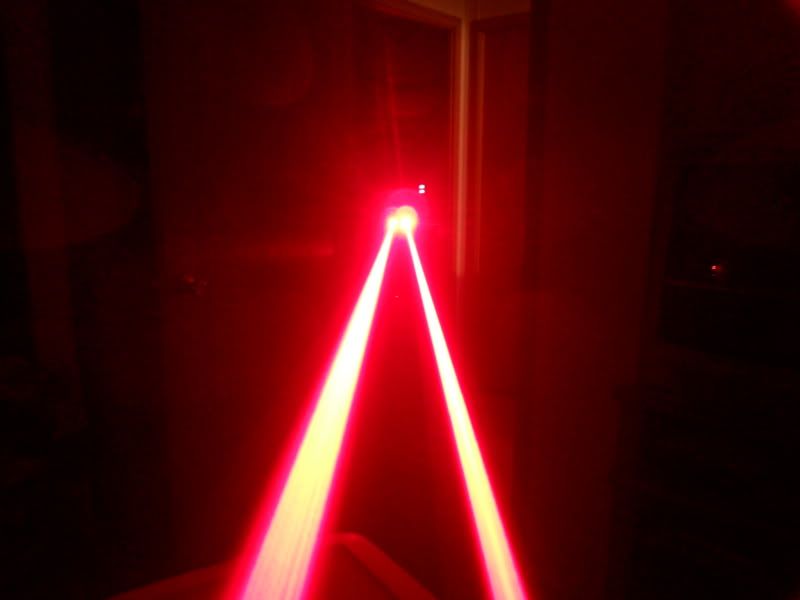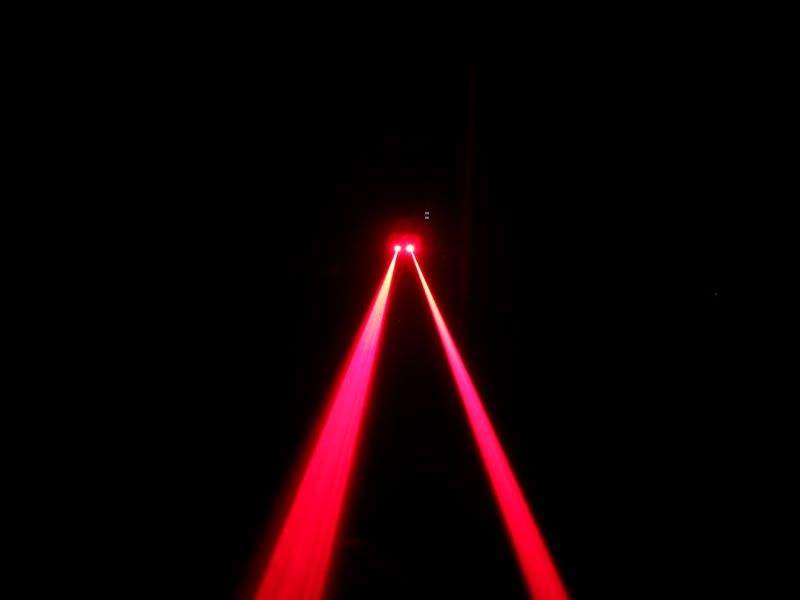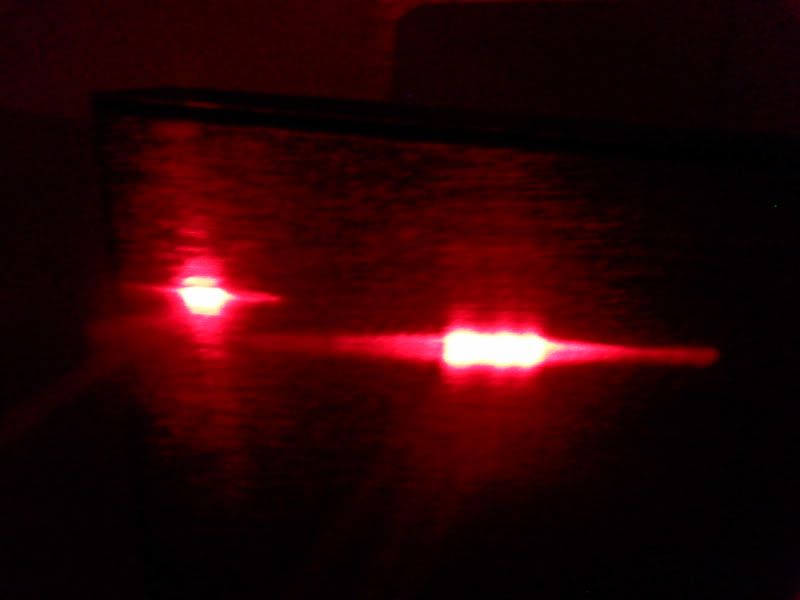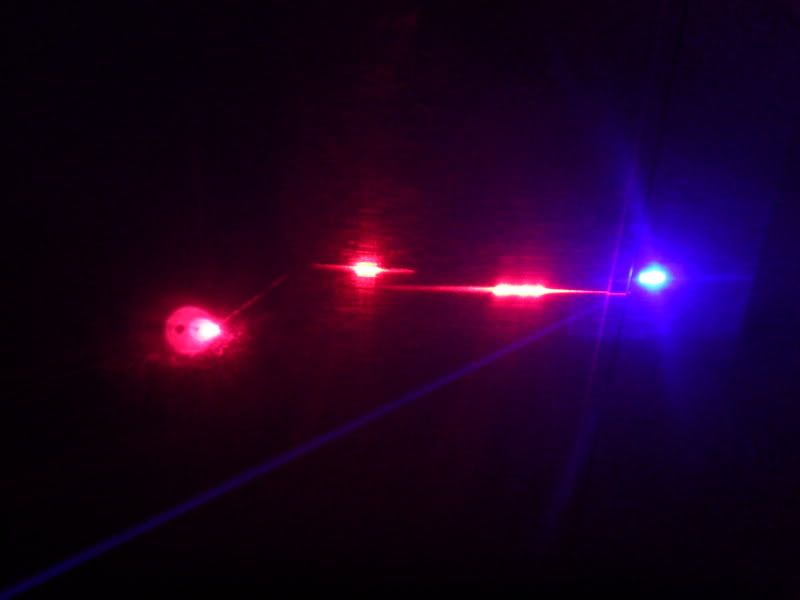- Joined
- Sep 12, 2007
- Messages
- 9,399
- Points
- 113
I'm sure there's research out there in this area already, but it's tough to find and I wanted to do it myself anyway. Experimenting is fun 
This is how the prism expands the beam:

I've seen that one prism works great. But everyone uses two. Why two? Presumably to expand the beam more. This also means higher losses, though, and you can also expand the beam more on one prism by increasing the beam's incidence angle. I was curious on how all of these factors compare, so I spent an afternoon on it. (these surplus shed prisms were used) These are my results
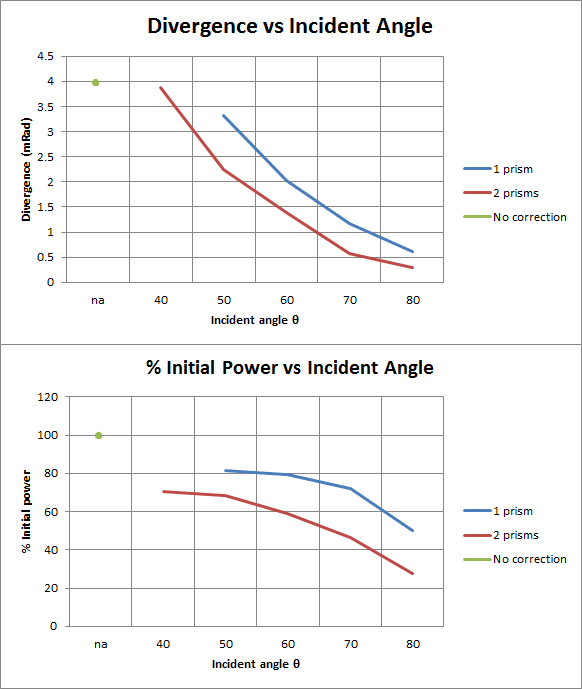
And this is what is meant by angle of incidence:

So... If I wanted 1.5mRad, I'd need to have either one prism at ~66°, or a prism pair at ~59°. A single prism loses 25%, and two prisms lose almost 40% at these respective angles. The only advantage I can see to using two is that the resulting beam can have the same direction, while a single prism steers the beam off to an angle.
These numbers will be different for other prisms, but the general line shapes and positions with respect to each other should be similar.
thoughts?
This is how the prism expands the beam:
I've seen that one prism works great. But everyone uses two. Why two? Presumably to expand the beam more. This also means higher losses, though, and you can also expand the beam more on one prism by increasing the beam's incidence angle. I was curious on how all of these factors compare, so I spent an afternoon on it. (these surplus shed prisms were used) These are my results

And this is what is meant by angle of incidence:
So... If I wanted 1.5mRad, I'd need to have either one prism at ~66°, or a prism pair at ~59°. A single prism loses 25%, and two prisms lose almost 40% at these respective angles. The only advantage I can see to using two is that the resulting beam can have the same direction, while a single prism steers the beam off to an angle.
These numbers will be different for other prisms, but the general line shapes and positions with respect to each other should be similar.
thoughts?
Attachments
Last edited:






